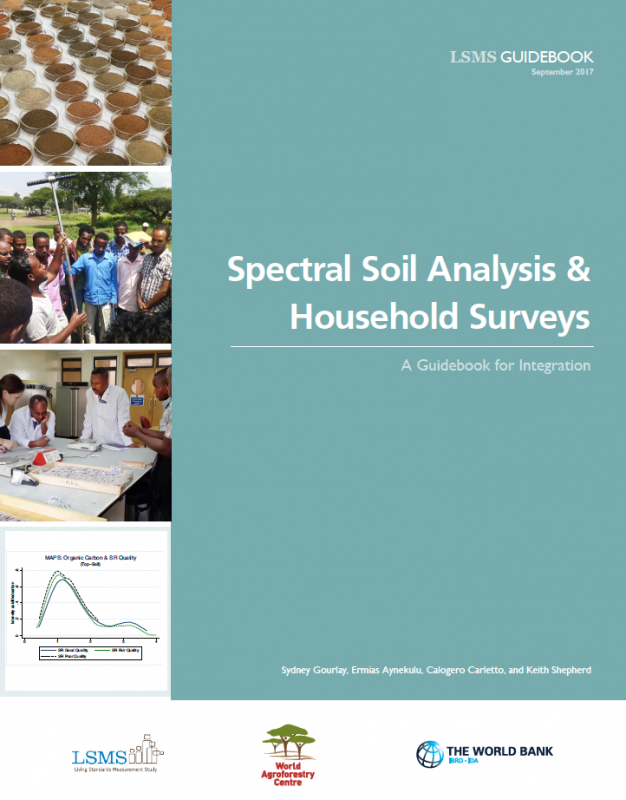
The importance of soil health in agrarian societies is indisputable – soil health has a direct relationship with agricultural productivity and sustainability. Yet, its highly complex nature renders it much more challenging to measure than other agricultural inputs, such as fertilizers or pesticides. Household surveys, particularly those in low-income contexts where agriculture is the primary means of livelihood, have generally relied on subjective assessments of soil health – and for good reason. Subjective assessment is relatively inexpensive, and alternative methodological options have historically been prohibitively expensive. Recent advances in rapid low-cost technologies, namely spectral soil analysis, however, have increased the feasibility of integrating objective plot-level soil health measurement in household surveys.
This new Guidebook provides practical guidance for survey practitioners aiming to implement objective soil health measurement via spectral analysis in household and farm surveys, particularly in low-income smallholder farmer contexts. Two methodological experiments, in Ethiopia and Uganda, provide the foundation for this Guidebook. In each study, plot-level soil samples were collected following best-practice protocols and analyzed using wet chemistry and spectral analysis methods at ICRAF’s Soil-Plant Diagnostics Laboratory, in addition to a subjective module of soil health questions asked of the plot manager. The Guidebook offers (i) a comparison of subjective farmer assessments of soil health with laboratory testing, and (ii) step-by-step guidance on how to implement spectral soil analysis in a household- or farm-level survey, from questionnaire design to soil sample collection, labeling, and processing.
The Guidebook is the result of collaboration between the World Bank's Living Standards Measurement Study (LSMS) team, the World Agroforestry Centre, the Central Statistical Agency of Ethiopia, and the Uganda Bureau of Statistics.
For practical advice on household survey design, visit the LSMS Guidebooks page: http://go.worldbank.org/0ZOAP159L0


Join the Conversation